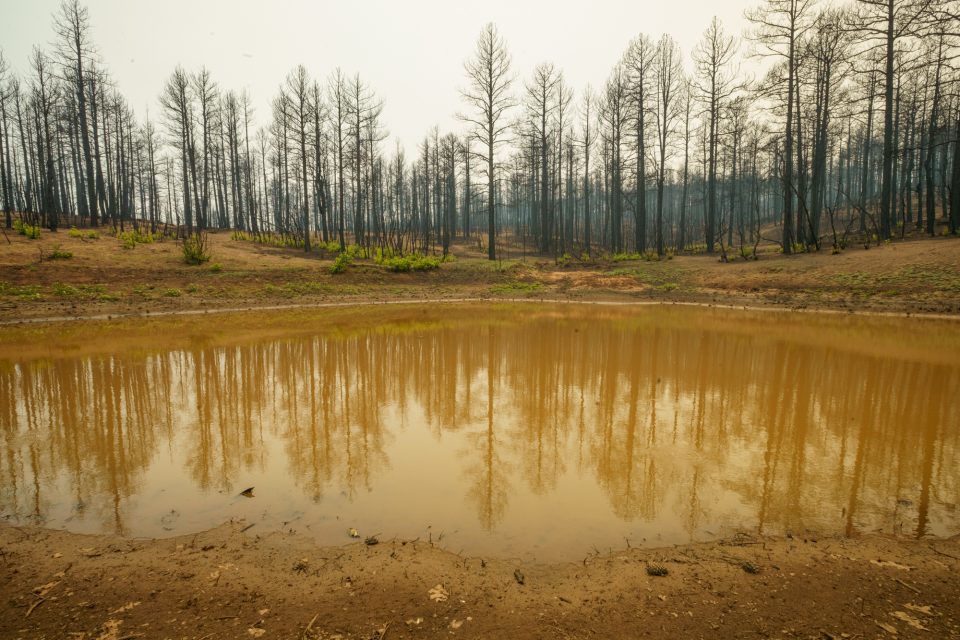“To get help it’s like talking to a wall,” said Kenny Martinez. “We’ll just work until it gets dark and then get up early in the morning to keep going.”
Beyond material resources, residents say they’ve struggled to even get technical advice from experts on what interventions they should do on their own.
Rob Roach has a home near a steep slope that burned in the fire. He said he reached out to the State Forestry Division for help designing flood mitigation plans for his property, but couldn’t find anyone providing even the most basic technical advice. He did his own research and designed a plan, which he estimates will cost about $20,000 by the time he’s done.
“New Mexico has good guidelines about fire prevention, but for this there are no concepts, no help,” Roach said. “Right now, people are really frustrated.”
Government officials note that there are large pools of federal money available for post-fire recovery, and that groups like the Natural Resources Conservation Service offer assistance to private landowners. But while assessors are working to analyze properties for possible mitigation work, the NRCS will not provide money or technical assistance until after all assessments are completed.
In the meantime, several offices have initiated watershed protection efforts. Last week, the Army Corps of Engineers completed the first tier of a series of rock-filled metal cages in the Gallinas River to protect the intake structures for Las Vegas’s drinking water systems. Called “gabion baskets,” these cages are designed to block debris from damaging water infrastructure and to filter out ash from drinking water supplies.
The Hermits Peak Watershed Coalition and the Tierra Y Montes Soil and Water Conservation District have introduced small projects to prevent major flooding damage to the Gallinas Watershed. That work will continue throughout the summer. But as with all mitigation work, its effectiveness will depend on the severity of the floods.The State Forestry Division is also coordinating erosion control within the Gallinas and Tecolote drainages and at the headwaters on Forest Service land.
“We do have some tools in our bag and some are really good,” said Lea Knutson, the director of the Hermits Peak Watershed Alliance. “We have to give it our best, but it really totally depends on how the rain comes.”


